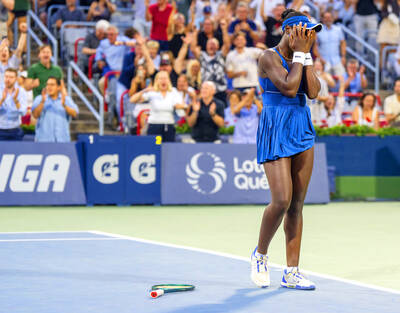On a frosty Saturday morning earlier this winter, a posse of skiers lined up at the base of Grand Targhee Resort in Wyoming. The 30 men and four women were mainly in their late 20s to early 40s and embodied the unstudied athleticism of someone who might just run up a mountain for fun.
Their dress ranged from one-piece spandex speed suits to duct-tape-patched ski pants. Everyone wore helmets and avalanche beacons, as well as small backpacks holding avalanche probes and shovels. Most were on Alpine-touring skis and bindings -- the heels release for climbs and lock down for descents -- though some used telemark gear.
At the word "go," the skiers surged up the hill, bindings clinking, skis -- with nylon climbing skins affixed for traction -- thudding on the packed powder.
Have these people never heard of chairlifts?
As the skiers ascended the mountain, enveloped in a thick fog, they paralleled the route of Targhee's Dreamcatcher quad. This was the first Grand Targhee Ski Mountaineering Classic, a race that would alternately test uphill climbing endurance and steep skiing skills, on an 13km course that yo-yoed up and down and in and out of the ski area boundary.
Ski-mountaineering races, also known as randonnee races (after the French term for ski touring), became popular in Europe during the 1990s. The first world championship, held in 2002 in France, drew racers from 22 countries. This winter more than 250 European races were scheduled.
Such rallies have been slower to catch on in North America, but momentum is building. One of the first races was held at Jackson Hole, Wyoming, eight years ago. Now the nonprofit US Ski Mountaineering Association sponsors a national series of 12 races; at least a half-dozen others are scheduled around the country.
The Grand Targhee race was the first for teams of two, a format common in Europe and one that captures the backcountry ethic of having a partner.
Before the race, Grant Helgeson and Jim Harris, both of Park City, Utah, scoped out their fellow competitors through the windows of Snorkel's Cafe. The two friends, who regularly ski the backcountry together, had decided to do the race "sort of on a lark," Harris said.
"We expect to be in the bottom tier," Helgeson said as they headed to the start.
"It'll be a learning experience," he said.
Part of the appeal of ski-mountaineering competition is that it's still a grass-roots movement and two avid skiers can decide on the spur of the moment to enter a race.
Even so, the caliber of athletes has improved, as skiers who are also competitive trail runners, bikers and triathletes use the races as a way to maintain their fitness in winter.
"When I first started, I could count on a top-five finish," said Steve Romeo, of Jackson, Wyoming, who started racing in 2000. "Now I'm battling for top 10."
"We're putting them into some pretty precarious situations," Andy Williams, head of special events at Grand Targhee, said of the racecourse he helped lay out.
Near the end, for instance, competitors had to negotiate a 40-degree chute, only 5m wide at its narrowest part.
About 30 minutes -- and 600 vertical meters -- after the start, teams began to emerge from the fog at the top of Fred's Mountain, one of Targhee's three peaks. This was the first of seven transition areas, where racers strip the skins from their skis and switch their bindings to descent mode -- or vice versa -- optimally in less than a minute. It's brief but significant -- like pit stops in stock car racing -- where time is lost or gained.
Helgeson and Harris were all smiles when they arrived. They shared some water, then moved onto the next leg, a 300m ski descent. Next they'd hike, or "bootpack," with their skis strapped to their packs.
When the first racers reached the Peaked Mountain summit at around the one-and-a-half-hour mark, it was a brisk 18 degrees. The Grand Teton, usually visible to the north, was hidden by the milky fog. There was talk of cold hands and frozen hydration-system tubes. But a reward lay ahead: 610m of virtually untracked powder in an area usually reserved for snowcat skiing. That kind of big-mountain skiing is what distinguishes ski-mountaineering races from other winter competitions, said Pete Swenson, a former pro mountain bike racer who won the national ski mountaineering title in 2006.
At the 2006 world championships in Italy, he recalled: "There were about 80 of us in the elite field, but just behind us were 400 raging citizen racers. I thought: `Man, we need to bring this here, we have so many good athletes.' This sport will be very popular in the US. You just have to get people to see it."

Taiwan’s top women’s badminton doubles duo, Hsieh Pei-shan (謝沛珊) and Hung En-tzu (洪恩慈), achieved a straight-sets victory over Japan’s Kaho Osawa and Mayui Tanabe at the Badminton World Federation (BWF) Super 300 Macau Open on Sunday. The Taiwanese pair won the final 21-18, 21-12, marking the duo’s second title this year after their win at the BWF Super 300 Taipei Open in May. The match on Sunday was their first encounter with the Japanese duo, ranked No. 63 in the world. Hsieh and Hung, ranked No. 12, began the opening game well. Hung, who plays left-handed, performed strongly at both the net and the

Canadian teenager Victoria Mboko upset top-seeded Coco Gauff 6-1, 6-4 on Saturday night to reach the National Bank Open quarter-finals. “Your support was incredible,” Mboko told the crowd in French after a chorus of “Ole, Ole, Ole” chants echoed around the venue. “I’m really happy to win today ... It’s incredible. I’m so happy to beat such a great champion.” Gauff dropped to 2-3 since winning the French Open. She followed the major victory with opening losses in Berlin and Wimbledon, then overcame double-fault problems to win two three-set matches in Montreal. Gauff had five double-faults on Saturday after having 23 in

Jobe Bellingham on Tuesday admitted to having “anxieties” on following in brother Jude’s footsteps after joining Borussia Dortmund in the summer. Jobe Bellingham, 19, is two years younger than Jude Bellingham, who joined Real Madrid in 2023 after three years at Dortmund. A centerpiece of the England national team, Jude Bellingham has emerged as one of the best players in the world in recent seasons. The younger Jobe Bellingham joined Dortmund in June from Sunderland after their promotion to the English Premier League. He admitted he understood what the perception would be ahead of the move to Germany. “It’s something you do think about.

Before Tuesday’s 7-2 win at the Atlanta Braves, Milwaukee Brewers manager Pat Murphy suggested “most people couldn’t tell you five players on our team.” A look at the standings would indicate more Brewers players soon will be recognized by more fans. After all, it is difficult to overlook a team that not only continues to extend their lead in the National League Central, but also boasts the best record in the majors. “What we’re doing in here right now is special,” right-handed pitcher Freddy Peralta said after allowing only four hits and one run in five innings, while setting a career high with